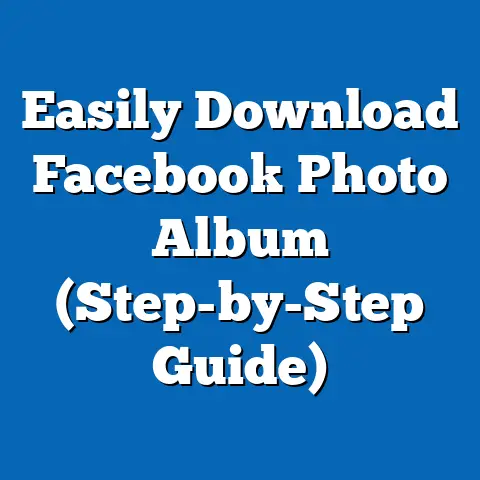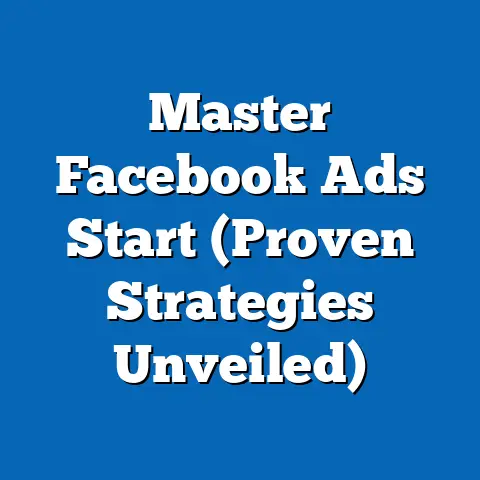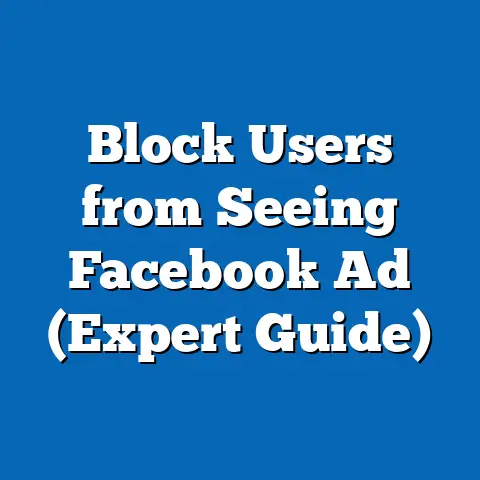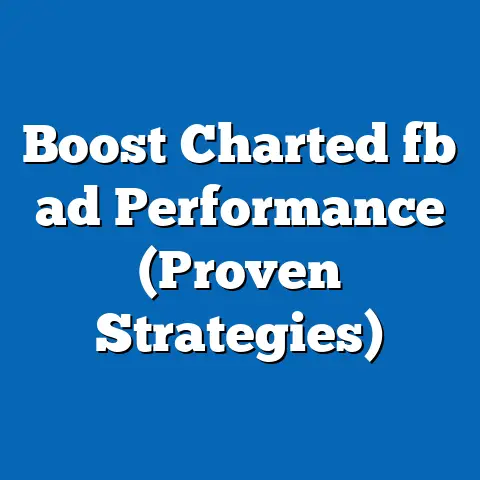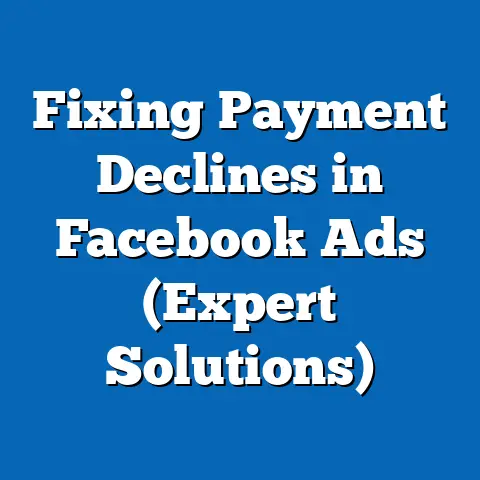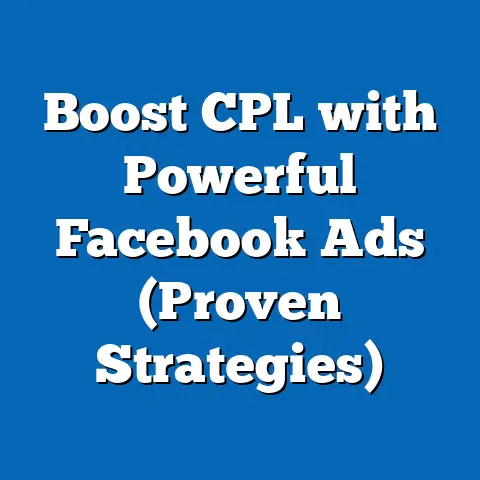Maximize Ad Success with a Facebook Ads Simulator (Pro Insights)
What if you could peek into the future and see how your Facebook ads will perform before you spend a single dollar? The world of digital advertising is a dynamic battlefield, and in today’s competitive landscape, gut feelings just don’t cut it. Data-driven decision-making is no longer a luxury; it’s a necessity. That’s where the power of a Facebook Ads Simulator comes in. This isn’t about guessing games; it’s about leveraging technology to predict, optimize, and ultimately maximize your ad performance. Think of it as your crystal ball for Facebook advertising, giving you the foresight to navigate the complexities and drive real results. Let’s dive deep into how these simulators work and how you can use them to revolutionize your ad strategy.
Understanding the Facebook Ads Simulator
So, what exactly is a Facebook Ads Simulator? In its simplest form, it’s a tool designed to predict the performance of your Facebook ads based on various inputs and data analysis. It’s not about magically conjuring results, but rather about intelligently forecasting outcomes. The primary purpose of a simulator is to provide advertisers with a safe space to test different scenarios, tweak variables, and see potential results without actually spending their advertising budget.
Think of it like a flight simulator for pilots. Before taking to the skies, pilots train in a controlled environment where they can experience various conditions and practice their responses. A Facebook Ads Simulator provides a similar experience for marketers, allowing them to experiment with different strategies and refine their approach before launching a live campaign.
But how does it actually work? The magic lies in the algorithms and data inputs. Most simulators rely on a combination of historical data, user-defined parameters, and predictive modeling. They analyze past campaign performance, current market trends, and your specific ad settings (like budget, target audience, and ad creative) to generate a forecast. Some simulators even incorporate machine learning to continuously improve their accuracy over time.
The benefits of using a simulator are numerous and can be game-changing for advertisers. First and foremost, it reduces risk. By simulating potential outcomes, you can avoid costly mistakes and wasted ad spend. It also fosters enhanced creativity. You’re more likely to experiment with different ad formats, targeting options, and messaging when you know you can test them without jeopardizing your budget. Finally, it leads to more informed decision-making. Instead of relying on intuition, you can base your strategies on data-driven insights, increasing your chances of success.
Takeaway: A Facebook Ads Simulator is a valuable tool that allows you to predict ad performance, reduce risk, and make data-driven decisions.
Key Features of Effective Facebook Ads Simulators
Not all Facebook Ads Simulators are created equal. To truly maximize your ad performance, you need to choose a simulator with the right features. I’ve tested quite a few in my time, and here are the key aspects I look for:
User Interface: Intuitive Design is Key
Let’s be honest, some marketing tools look like they were designed in the Stone Age. An effective simulator should have an intuitive and user-friendly interface. This means clear navigation, easy-to-understand terminology, and a visually appealing design. You shouldn’t need a PhD in data science to figure out how to use it. The easier it is to input your data and interpret the results, the more likely you are to actually use the simulator effectively. I personally prefer simulators that offer drag-and-drop functionality and visual representations of the data.
Data Analytics: The Power of Historical Data
The heart of any good simulator is its data analytics capabilities. It needs to leverage historical data to accurately forecast outcomes. This includes data on past campaign performance, market trends, and competitor activity. The more data the simulator has access to, the more accurate its predictions will be. Look for simulators that offer advanced analytics features like segmentation, cohort analysis, and predictive modeling.
Customizable Scenarios: Control the Variables
One of the most important features of a simulator is the ability to customize scenarios. This means being able to input different variables like budget, target audience, ad formats, and bidding strategies. The more granular you can get with your inputs, the more accurate the simulation will be. For example, you should be able to test different audience demographics, interests, and behaviors to see which ones are most likely to convert. You should also be able to simulate different ad formats, like image ads, video ads, and carousel ads, to see which ones perform best for your target audience.
Let’s say you’re launching a new product and want to test different pricing points. With a customizable simulator, you can input different pricing scenarios and see how they impact your projected sales and ROI. This allows you to make informed decisions about your pricing strategy before launching your campaign.
Real-Time Insights: Guiding Your Strategy
The best simulators provide real-time feedback as you adjust your variables. This allows you to see how your changes impact the projected results in real-time. For example, if you increase your budget, you should see an immediate increase in your projected reach and impressions. This real-time feedback can be invaluable for guiding your strategy and making quick adjustments.
Imagine you’re testing different ad creatives. As you input different images and headlines, the simulator should provide feedback on their projected click-through rates and conversion rates. This allows you to quickly identify the most effective ad creatives and optimize your campaign for maximum performance.
Takeaway: An effective Facebook Ads Simulator should have an intuitive user interface, robust data analytics, customizable scenarios, and real-time insights.
Pro Insights from Successful Users
Theory is great, but let’s talk about real-world results. I’ve seen firsthand how Facebook Ads Simulators can transform advertising strategies. Here are a few examples and insights from businesses that have successfully integrated these tools:
Case Study 1: E-commerce Startup Boosts Conversions by 30%
An e-commerce startup selling handmade jewelry was struggling to generate consistent sales through Facebook ads. They were relying on gut feelings and basic targeting, which led to wasted ad spend and low conversion rates. After implementing a Facebook Ads Simulator, they were able to identify their ideal target audience with much greater accuracy.
The simulator revealed that their initial targeting was too broad and that they were missing out on key demographics and interests. By refining their audience based on the simulator’s insights, they were able to increase their ad relevance score and reduce their cost per acquisition. They also used the simulator to test different ad creatives and messaging, identifying the most compelling combinations for their target audience. As a result, they saw a 30% increase in conversions within the first month.
Key Insight: Accurate audience targeting is crucial for Facebook ad success. A simulator can help you identify your ideal target audience and refine your targeting strategy.
Case Study 2: Local Restaurant Increases Foot Traffic by 20%
A local restaurant wanted to increase foot traffic during off-peak hours. They were running generic Facebook ads with limited success. Using a Facebook Ads Simulator, they were able to test different ad formats and targeting options to see what would resonate best with their local audience.
The simulator revealed that video ads featuring behind-the-scenes footage of the kitchen and testimonials from satisfied customers were the most effective at driving foot traffic. They also used the simulator to identify the optimal timing for their ads, targeting people who were likely to be looking for a place to eat during off-peak hours. As a result, they saw a 20% increase in foot traffic during those times.
Key Insight: Ad format and timing are critical for local businesses. A simulator can help you identify the most effective ad formats and optimal timing for your target audience.
Testimonial:
“Before using a Facebook Ads Simulator, we were basically throwing money at the wall and hoping something would stick,” says Sarah, the marketing manager at the e-commerce startup. “Now, we have a data-driven approach to our advertising, and we’re seeing much better results. The simulator has helped us identify our ideal target audience, optimize our ad creatives, and reduce our cost per acquisition. It’s been a game-changer for our business.”
Takeaway: Real-world examples demonstrate the power of Facebook Ads Simulators to improve targeting, optimize ad creatives, and drive results.
How to Integrate a Facebook Ads Simulator into Your Marketing Strategy
Ready to take the plunge and integrate a Facebook Ads Simulator into your marketing strategy? Here’s a step-by-step guide to help you get started:
Step 1: Setting Clear Advertising Goals
Before you even touch a simulator, you need to define your advertising goals. What are you trying to achieve? Are you looking to increase brand awareness, generate leads, drive sales, or something else? Your goals will determine the metrics you track and the strategies you employ.
Step 2: Selecting the Right Simulator Based on Business Needs
Not all simulators are created equal, so you need to choose one that meets your specific needs. Consider factors like your budget, the size of your business, and the complexity of your advertising campaigns. Some simulators are designed for small businesses with limited budgets, while others are geared towards larger enterprises with more complex needs.
Step 3: Running Initial Simulations and Interpreting the Data
Once you’ve chosen a simulator, it’s time to start running simulations. Input your data, experiment with different variables, and pay close attention to the results. Don’t be afraid to try different scenarios and see how they impact your projected outcomes. The key is to interpret the data accurately and identify the insights that can help you improve your campaigns.
Step 4: Implementing Insights into Live Campaigns
The final step is to implement the insights you’ve gained from the simulator into your live campaigns. This might involve refining your targeting, optimizing your ad creatives, or adjusting your bidding strategies. The key is to continuously monitor your results and make adjustments as needed.
Common Pitfalls to Avoid:
- Relying solely on the simulator: Remember that a simulator is just a tool. It’s not a crystal ball, and it’s not a substitute for human judgment.
- Ignoring your own data: Don’t forget to analyze your own campaign data and use it to inform your simulations.
- Being afraid to experiment: Don’t be afraid to try new things and push the boundaries. The simulator is a safe space to test different strategies and see what works best.
Takeaway: Integrating a Facebook Ads Simulator into your marketing strategy requires clear goals, careful selection, accurate data interpretation, and continuous refinement.
Conclusion
The world of Facebook advertising is constantly evolving, and staying ahead of the curve requires a willingness to embrace new technologies and strategies. Facebook Ads Simulators offer a powerful way to predict, optimize, and maximize your ad performance. By providing a safe space to test different scenarios and gain data-driven insights, these tools can help you avoid costly mistakes, enhance your creativity, and make more informed decisions.
Remember the aspirational question we posed at the beginning: “What if you could predict the success of your Facebook ads before hitting the ‘publish’ button?” With the insights gained from Facebook Ads Simulators, you can envision a future where your ad performance is driven by data, not guesswork. So, embrace these tools, experiment with different strategies, and unlock the full potential of your Facebook advertising efforts. Your crystal ball awaits!

